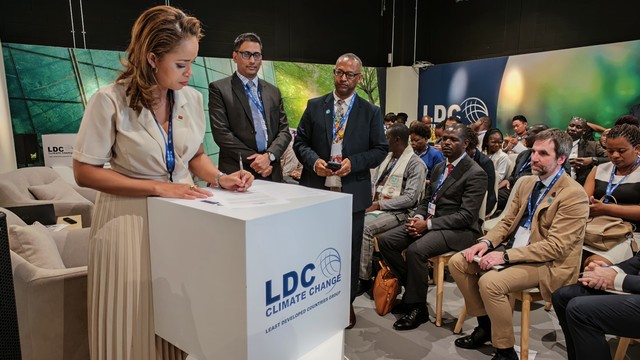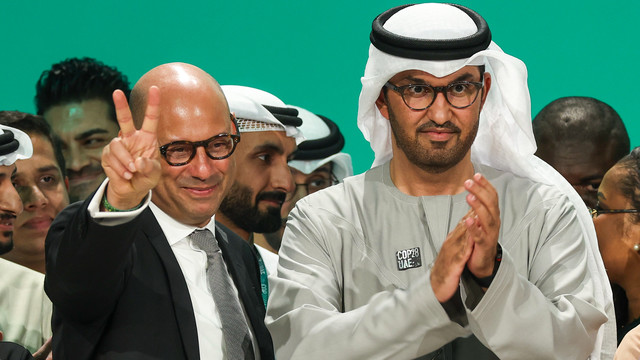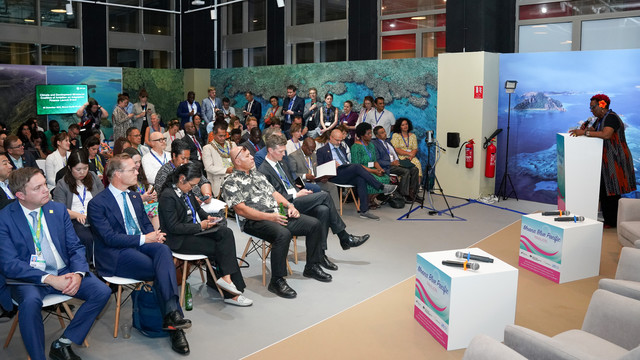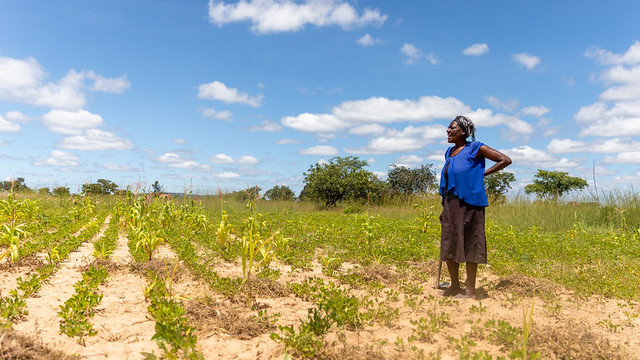Transformational change is needed in the adaptation finance landscape for LDCs and SIDS
Amid the growing calls for reforming the international financial system, Tina Stege, climate envoy of the Marshall Islands, reflects on why reform of the climate finance system is so important and what it could look like


The Marshall Islands coping with the effects of climate change and rising sea levels (Photo: Asian Development Bank via Flickr, CC BY-NC-ND 2.0)
The Republic of the Marshall Islands is an atoll nation, less than a metre above sea level on average. Adaptation in an atoll nation is already very challenging. But with what the science is projecting by 2050, the scale of adaptation needed – and the extent of loss and damage we’ll face – is unfathomable.
We are charting a course towards a more resilient future for our country and our people through our National Adaptation Plan (NAP), which we call our survival plan.
But we cannot implement our NAP with a project-based approach. We need to be able to transform our systems to undertake the transformational adaptation to keep our country and people safe.
Working within the system
We have spent years planning for how we respond to the climate crisis. We were the first to submit an enhanced nationally determined contribution in 2018, and provided a sectoral update in 2020, and we were also an early submitter of an adaptation communication − a report prepared by countries that sets out priorities, needs and lessons for adapting to climate change. Today, we’re in the process of finalising our NAP.
And with that, we’ve also played the game on climate finance – because we know we need it to implement those plans. We are in the relevant networks and technical support associations, and we wrote the proposals and applied for funds.
Some donors came through and we made some progress. And this has primarily been on mitigation projects, where we know donors have tended to focus their attention – but even with that, it’s been a fight to get that funding and the delays have meant very slow progress.
For the climate finance we’ve received, we’ve had to go through a separate and different application process, manage each one differently, and fulfil the associated reporting and due diligence separately, even though all these funders are ostensibly in the same system. Even the many funds under the UN process have to each be accessed from scratch, with the full process from application to reporting undertaken for that particular entity individually.
Especially in relation to adaptation, this model is not going to work to address the challenges we face.
The first issue is that the money is not there to help countries at risk adapt at the scale we need, especially given that Small Island Developing States (SIDS) cannot afford to add to our existing debt burdens to adapt. But the processes to access and channel the money – even if the money was there – make it incredibly difficult for us to do the work.
The SIDS are very small countries with very small governments. This makes mobilising action at scale a challenge. So these types of finance systems, which don’t differentiate between the capacity of smaller or larger governments, and are such a heavy strain on resources, leave us little hope.
The recent conversations around loss and damage have been very helpful for us in communicating the shift that needs to happen. The discussions on what the new loss and damage fund might look like, and how the processes might be shaped, have offered space for us to discuss all our experiences in terms of climate finance, and all the difficulties and challenges that are both country and context specific, and those that are universal across developing countries.
Tweaking the system is not enough
The system needs major changes: it needs streamlining, and application processes and reporting processes need to be made more manageable to avoid duplication; it needs special windows that allow for smaller-scale projects without all the overheads that are required for larger programmes; and many other such solutions. All these things are needed, and are very useful. And we have been calling for them for a long time already.
But for the scale of adaptation we need, those things alone will not solve the problem. Instead, we need programmatic funding at scale.
In the Republic of the Marshall Islands, we passed legislation last year for an adaptation and resilience fund. It is still early days, and we are keen to learn from others in fleshing it out, but the idea is that any funds that come into the country for climate action would go in there, and then we can programme it behind a longer-term strategic vision based on our NAP and other climate-related roadmaps and plans.
That is what we need to undertake the kind of large-scale, capital intensive and long-term actions – like raising buildings or land – that can only be enabled by long-term predictable funding. We need timelines to shift: instead of the three-year cycles that we see today, which put money towards specific projects, we should be looking at timeframes that are more appropriate for the type of transformative, society-wide work we’re aiming to do. We should be looking at a 10 to 20-year period.
Now we need donors to support this system. There is no space for the type of funding which gets stuck because one workshop was held instead of two, or because a report didn’t quite check the box that was needed for a KPI that has nothing to do with what the people on the ground need, but what the funder needed. This isn’t to avoid accountability, but to bring rationality to a system that is far too complex to deliver what it needs to – for both providers and recipients.
What is good funding?
It’s becoming increasingly clear that to improve the system we need greater trust. This is different from accountability.
There of course needs to be accountability that the money is being spent well. However, accountability underpinned by trust allows us to be able to go past the micromanagement of having to do things just to check a box.
We need a system where we can mutually agree on the good governance of decision-making in the country, and then trust the decisions emerging from the systems. And then accountability means that people and communities are becoming more resilient, and that their needs are being met, not just that a box was checked.
We need to move the needle at COP28
To achieve this shift, we are going to need bold action from climate finance providers. We need to be talking about the core of what is needed, which is the shift in the way things are done. To deliver what is needed right now – a transformation in mitigation, adaptation, and on loss and damage − we are falling far short.
There is a real recognition, from widespread experiences across climate-vulnerable countries, that the current systems aren’t working. We need climate finance providers to show real appetite and momentum, and commitment to reform their systems to make them fit-for-purpose.
Related reading
- Reform the global financial system to support transformational adaptation by UnaMay Gordon
- Learning from adaptation financing that is working for LDCs and SIDS by Gebru Jember Endalew and Sejal Patel



